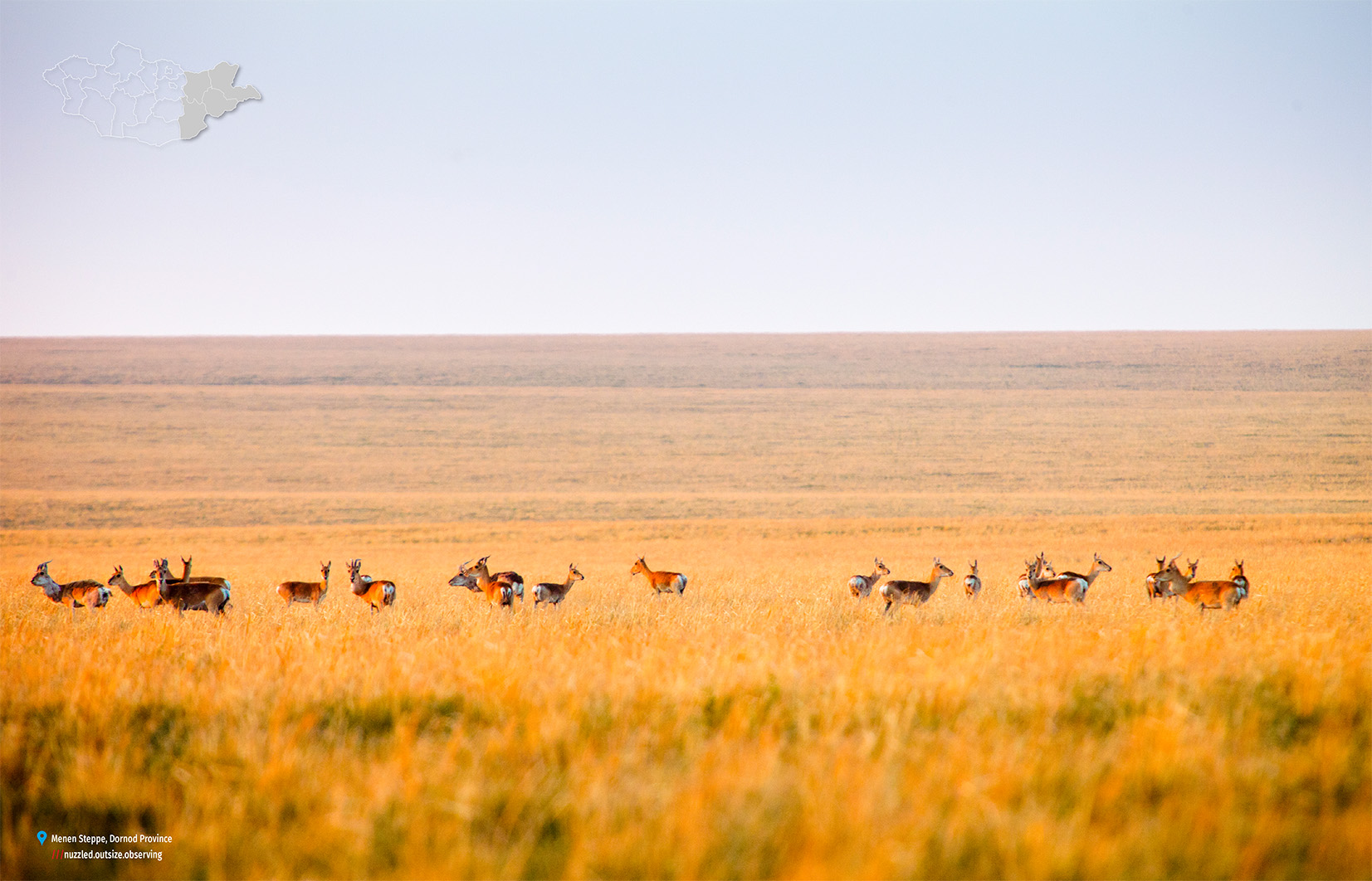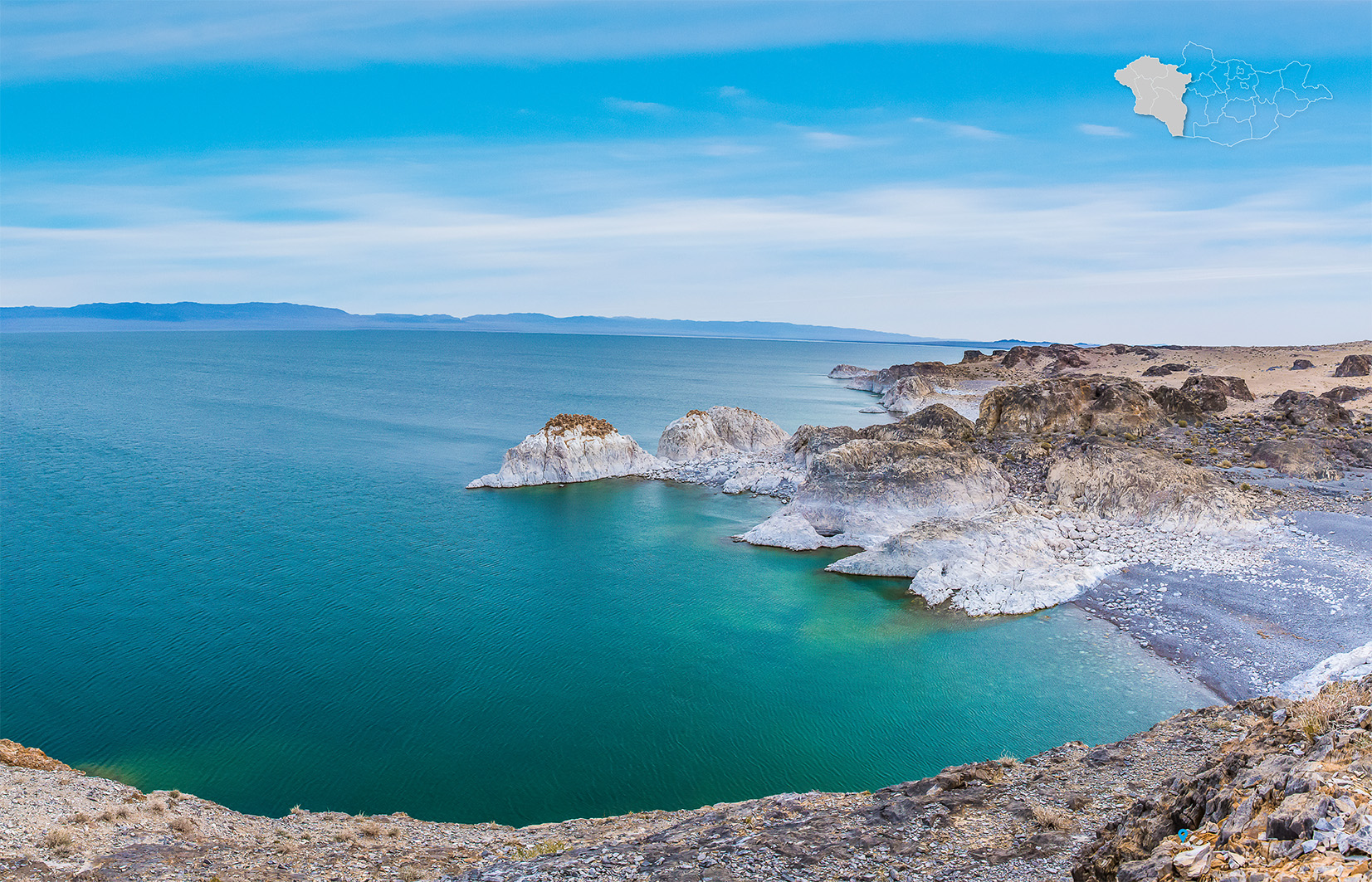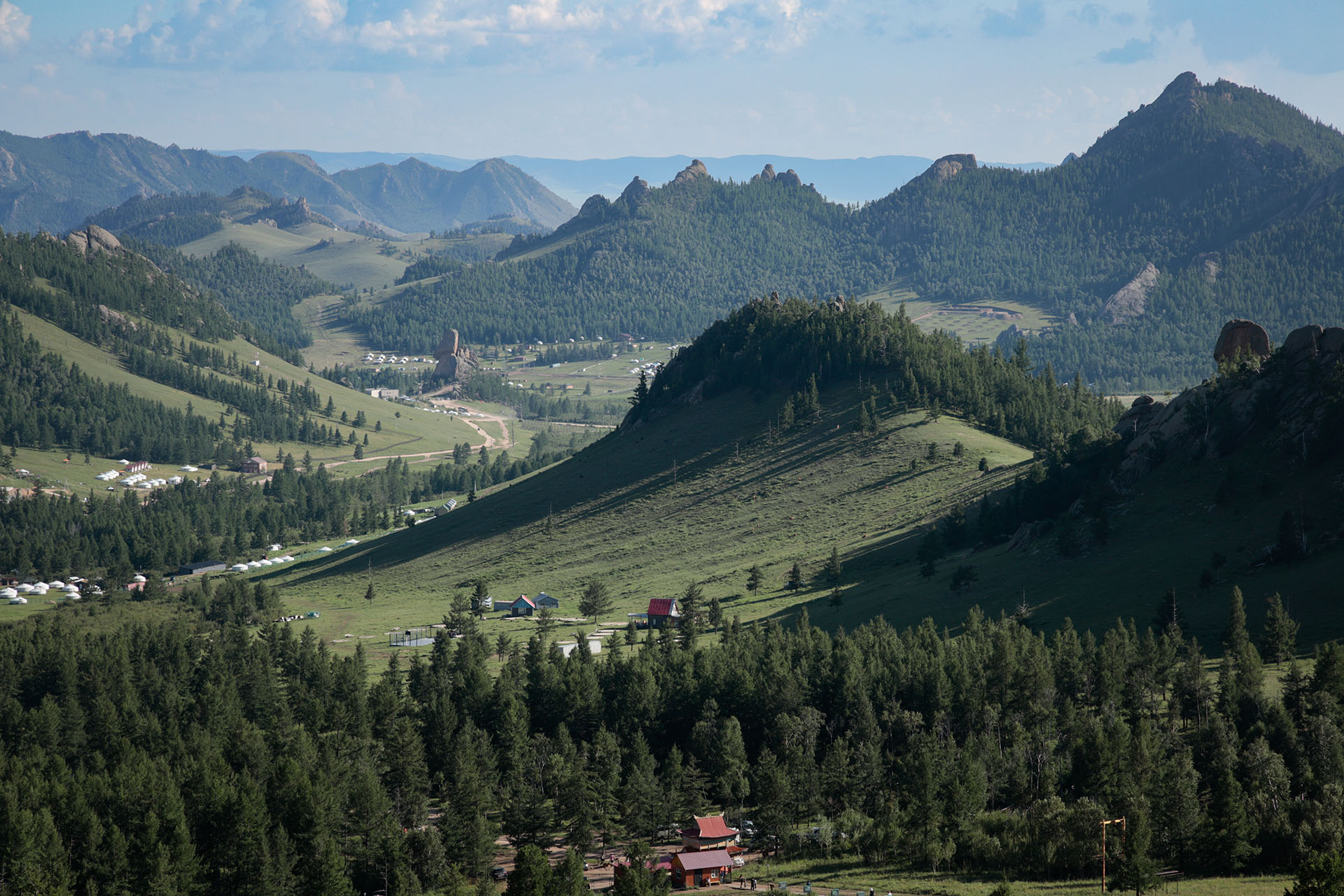Mongolia boasts a fascinating and diverse geography.
- East: Vast grasslands where the sun seems to rise directly from the land.
- South: The Gobi Desert, home to dinosaur fossils and two-humped Bactrian camels navigating sand dunes like ships on a sea of sand.
- West: Majestic mountain ranges with cloud-covered peaks and glacier-filled valleys.
- North: Spectacular freshwater lakes and rivers among the world’s finest.
- Central Mongolia: Valleys rich with history, featuring deer stones, petroglyphs, and more.
Tourists can immerse themselves in these landscapes while discovering the timeless traditions and lifestyles of nomads who have thrived here for millennia.
This is Mongolia—the land of nomads who embrace, adapt to, and follow the ever-changing moods of Mother Nature.

Since ancient times, the vast steppe of Eastern Mongolia has been the homeland of ethnic groups such as the Khalkha, Buryat, Zakhchin, Dariganga, Barga, and Uzemchin. Proud of their heritage, they live on the legendary Dariganga Plateau, a land deeply connected to Chinggis Khaan.
One can truly appreciate Mongolia’s beauty here by watching the sunrise, where horses break the morning silence with their neighs and herds of gazelles gallop in the distance. Chinggis Khaan himself often visited this area after his victorious campaigns, drawing strength and inspiration from the endless horizon. Standing on this land, he is said to have channeled power, wisdom, patience, and courage.
The eastern steppes are a sea of feathery grass, preserved for centuries by the nomadic Mongols. Their philosophy of living in harmony with nature—winning by waiting rather than forging ahead—has kept this untouched, virgin land pristine for future generations. These endless grasslands are a treasure held by nomads for all of humanity.
A Sanctuary for White Gazelles
The steppes of Eastern Mongolia are home to thousands of white gazelles, with approximately one-third of the world’s population residing here. In 2007, Professor Kirk Olson of the University of Massachusetts – Amherst witnessed an extraordinary sight: over 250,000 gazelles moving as one across the horizon.
Recalling the event to the BBC, Olson said:
“We were simply amazed at the sight. The image I have in my mind of seeing this massive aggregation of gazelles will always be etched into my memory.”
Mongolian gazelles are renowned for their enormous herds, often numbering 300-500 individuals. Some herds, however, are much larger, with recent sightings of up to 80,000. These gazelles represent the highest number of wild animals in Central Asia and are a true marvel of nature.
Eastern Mongolia is a realm where nature’s raw beauty and nomadic traditions come together, offering a profound connection to the land and its history.

The Mongolian Gobi Desert is a land of wonder, where the clay from ancient shores and hills dating back to the Cretaceous period appears ablaze during sunrise and sunset. The fiery hues create an otherworldly experience, but in truth, you’re standing in one of Earth’s most captivating landscapes.
Fossils and Flora
Dinosaur fossils from millions of years ago still lie hidden here, often veiled by the ubiquitous Saxaul forests. These treasures, small yet significant, are part of the Gobi’s legacy. The desert plants, resilient and dormant in drought but blooming after a single rain, are equally fascinating. While the golden sands may erase your footprints with the next gust of wind, the Gobi Desert will leave an indelible mark on your heart.
Nature’s Song of Sand: Khongor Sand Dunes
The Khongor sand dunes stretch from northwest to southeast, spanning 27 km at their widest and covering 965 square km in total. Towering at 200 meters (650 feet), these dunes are divided into three distinct parts: the rocky and mountainous southern terrain, the barren and plantless central expanse, and the lush northern oases. The shifting sands sing with the wind, offering a melody unique to the Gobi.
Flaming Cliffs: Bayanzag
Bayanzag, famously known as the Flaming Cliffs, gained worldwide recognition in the 1920s when American explorer Roy Chapman Andrews discovered dinosaur eggs and fossils here. Located in the valley of the Arts Bogd mountain range, Bayanzag’s 8 km stretch reveals breathtaking red cliffs that glow like flames during sunset. The sight leaves visitors in awe, earning the cliffs their fiery name.
Gobi Waterfall: Tsagaan Suvarga
Tsagaan Suvarga, located in Luus soum of Dundgobi Province, is a natural formation resembling the ruins of an ancient city. Standing 30 meters tall and 400 meters long, its vertical walls transform into a stunning waterfall during heavy rain, showcasing nature’s artistry.
Dragon’s Grave: Nemegt Mountain
Nemegt Mountain, along with Altan Mountain, Tugrugiin Shiree, Ukhaa Tolgod, and Khermen Tsav, holds global significance in paleontology. These locations frequently host international research expeditions and are renowned for their wealth of dinosaur fossils.
The Mongolian Gobi is more than a desert—it’s a timeless testament to nature’s beauty, resilience, and history, waiting to be explored.

Western Mongolia offers a unique blend of desert, steppe, taiga, tundra, and mountains. This region is home to a variety of ethnic groups that have lived together in harmony for centuries. Known for its rich cultural traditions, Western Mongolia boasts a vibrant history of traditional dances (biyelgee), throat singing (khoomei), and the melodic tunes of the tsuur, a flute-like instrument passed down through generations.
Primeval Footprints: Khoid Tsenheriin Cave
Khoid Tsenheriin Cave, also known as Northern Blue Cave, is located 25 kilometers from Mankhan soum in Khovd Province. Its walls and ceilings are adorned with paintings created by Central Asian tribes during the Palaeolithic Age. These ancient artworks depict large birds, camels, mammals, buffalo, and trees in deep red and beige hues—animals that once roamed Mongolia but are now extinct. The content and intricate composition of these paintings provide valuable insights into Palaeolithic history and culture.
Home to the Gobi Bear: Eej Khairkhan Mountain
Eej Khairkhan Mountain, situated in Tsogt soum of Gobi-Altai Province, is a remarkable natural formation. This area is teeming with diverse wildlife, including rare bird species such as partridges, Mongolian ground jays, and Great Bustards. The desert’s blue mountain is also a sanctuary for the elusive Gobi bear, wild Bactrian camels, and saxaul trees—drought-resistant plants that capture sunlight and thermal energy to survive the harsh environment.
Untouched Beauty: Uvs Lake
Uvs Lake, the largest lake in Mongolia at 3,350 square kilometers, is a place of profound historical and natural significance. This region served as the birthplace of the Hunnus, Turks, and Skiffs, ancient peoples who left an indelible mark on world history. The lake’s basin, the largest untouched watershed in Central Asia, is a treasure trove of 40,000 archaeological artifacts. Recognized as a UNESCO World Heritage Site in 2003, Uvs Lake remains a testament to the region’s extraordinary heritage.
The Blue Pearl of the North: Lake Khuvsgul
Lake Khuvsgul, known as the “Mother Sea” by Mongolians, is part of the Amur River Basin, which includes over 300 rivers and 26 large lakes. This awe-inspiring lake, believed to be 2 million years old, holds 0.4 percent of the world’s freshwater reserves. Its boundless expanse and secret trails invite visitors to explore its pristine beauty.
Western Mongolia is a region where natural wonders, ancient history, and cultural richness come together, offering an unforgettable experience for those who visit.

Central Mongolia was the epicenter of the Great Mongol Empire. This region, rich with history, is where the empire’s first official capital, Karakorum, was established in the 13th century. Its vast grasslands were home to ancient peoples who left their stories etched in rocks and deer stones, preserving their lifestyle for future generations.
Wonder of Volcano: Khorgo Volcano
Khorgo Volcano, towering 2,240 meters above sea level, erupted twice around 9 million years ago before becoming dormant. It is the youngest volcano in Mongolia, with prehistoric lava flows stretching 100 km east to the Suman and Chuluut rivers. The crater, sloping at about 50 degrees, is 100 meters deep and has a diameter of 300-400 meters, making it a natural marvel worth exploring.
Ancient Gallery of Art: Bichigtiin Khad Rock
Located in Ikh Bichigt, Bayankhongor Province, Bichigtiin Khad rock is adorned with ancient engravings. Among the most striking is an image of a man with an ox-drawn harrow, evidence that animals were used for plowing and cultivation over 3,000 years ago. Similar rock inscriptions can be found across Mongolia, including Khoid Tsenher Cave in Khovd Province and Tevsh Mountain in Uvurkhangai Province. These primitive yet powerful records give us glimpses into the lives and mindsets of ancient peoples.
Natural Heritage of Humanity: Orkhon Valley
For those drawn to the history of the Mongol Empire, the Orkhon Valley Protected Area is a must-see. Along the Orkhon River, you’ll find the Ulaan Tsutgalan Waterfall, the ruins of Karakorum (built in 1220 by Chinggis Khaan), Erdene Zuu Monastery with its iconic 108 stupas, and the Tuvkhun Monastery perched atop a mountain, accessible by a 600-meter hike. Located 360 km from Ulaanbaatar, the Orkhon Valley captures the spirit of Mongolia’s imperial past.

Northern Mongolia has long captivated the hearts and minds of travelers. This region is home to the majestic Khangai and Sayan mountain ranges, the shimmering Khuvsgul Lake often referred to as a borderless blue pearl, the expansive Darkhad Tsenkher Depression—a valley where rivers flow from high mountains—and ancient deer stones, monuments of historical and cultural significance.
The region is also home to diverse ethnic groups, each contributing to its rich tapestry. The Khotgoid people take pride in the swift Tes River, the Khalkh revere their scenic mountains, and the industrious Darkhad people enrich the cultural legacy of the area.
Taiga Nomads: Reindeer Herders
At the northernmost boundary of Mongolia, in the basins of the Tengis, Sharga, and Shishged rivers, and the mountains of the Jams and Ulaan Taiga, live the Tsaatan people, or reindeer herders. These nomads maintain a unique way of life, far removed from modern civilization. They herd their reindeer in deep forests, enduring extreme weather—27°C in summer and plunging to -55°C to -60°C in winter. Their traditions and lifestyle are a remarkable testament to human resilience and adaptability.
Majestic Beauty: Khoridol Saridag
The Khoridol Saridag mountain range is a pristine landscape combining meadows, steppe, and taiga. One of Mongolia’s untouched treasures, these mountains are the source of many rivers, including the Arsai River, which forms the country’s highest waterfall during rainfall. The range is separated from the Bayan Mountains by the Arsai Passage, with steep cliffs marking the Darkhad Depression side.
Abundance of Rare Treasures: Deer Stones (Megaliths)
Nestled in a large valley between mountains, 14 granite deer stones stand as rare archaeological treasures. Ranging from 2.3 to 4.8 meters in height, up to 1 meter wide, and 50 cm thick, these stones are intricately decorated. Ancient nomads considered deer to be heavenly animals, often carving their heads to face the sky.
The stones are adorned with images of the sun, moon, and deer, accompanied by belt-like motifs. They also depict ancient tools, weapons, and personal items such as bows, arrows, and pentahedron shields. Some rare stones even feature two deer facing each other at the base, adding to their mystique.
Northern Mongolia is a region where untouched natural beauty and centuries-old traditions coexist, offering visitors an unparalleled glimpse into the harmony of nature and culture.

